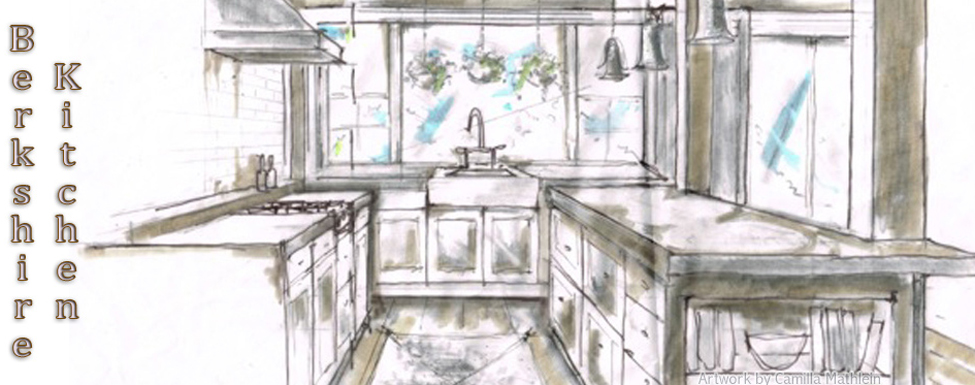Clams, Chourico & Kale
Growing up by the shore in Massachusetts, summertime gatherings often included freshly harvested shellfish. Clamming is a fun way to introduce children to the different varieties of shellfish. Before harvesting, contact the town to find out whether shellfishing is allowed, whether you need a license and any catch limits, size limits or allowable tools to use.
As a child, I have fond memories of wiggling my toes down into the mud at low tide until I felt the shell of a clam. No “special tools required” – just a lively child with wiggly toes! Nowadays I forgo the wiggling and purchase clams at our local seafood market. Nonetheless, because these bivalves have spent years in the mud, it’s best to scrub them well before cooking. Hard shell clams – also called littlenecks – are easiest to clean as they live in sand while open-shelled clams like steamers live in dense mud and can take a lot longer to purge.
Although most seafood markets have already purged their clams to get rid of most of the sand and grit, I always scrub the shells with a brush then soak the clams in saline, cold water for about an hour before cooking. Don’t bother with the recipes that call for adding cornmeal of black pepper to the purging water – that’s a ridiculous concept! Clams don’t “eat” cornmeal or pepper! They are filter feeders. Any sand that is inside the shell has gotten there as a side effect of their eating microscopic particles as they filter water.
To purge your clams you need enough salty water to completely submerge your clams. Fresh water kills clams – so does chlorine. If you live in a town with treated water, purchase a gallon of spring water. It may be obvious, but worth mentioning, that it’s also best to use “sea salt” rather than iodized or rock salt to salinize the water. Mix 1 gallon of water with 2/3 cup of sea salt. Stir to dissolve. The saline water should be cool or at room temperature, not warm. You want to mimic the temperature of the water in which they lived.
Quickly rinse your clams under cold tap water to remove any grit on the shell. I like to quickly scrub the clam shells with a small nail brush. Any clams that don’t shut tightly (“clam up”), or ones that have chipped shells, should be tossed out.
Put your scrubbed clams into a large bowl and pour on the cold saline water, making sure the clams are completely submerged. Set them aside and let them purge for about an hour. You may notice that the clams have their shells open a bit and their syphons out as they filter in the clean saline water. The bottom of the bowl will begin to accumulate a layer of sand as the clams spit out some of the grit when they are filtering water. When it’s time to cook, carefully remove the clams from the purging water, rinse them quickly under running tap water and discard the sandy purging water.
This is one of my favorite recipes for summertime clams. It’s a delicious combination of savory chourico, sautéed onions, kale and littleneck clams. For a main course, I generally plan on two dozen clams per person but even 18 each would be a delicious meal. If you own a cataplana (hinged shell-shaped cooking pot) this is the perfect time to dig it out. If not, any large pot with a well-fitting lid will do.
CLAMS, CHOURICO & KALE
Extra virgin olive oil (preferably strong-flavored Portuguese olive oil)
1 cup sweet Vidalia onion, thinly sliced
1 link Gaspar chourico, chopped into small pieces
2 cups kale, chopped
1 bottle or can of beer (I like to use Corona beer for this recipe)
24 littleneck clams, scrubbed and purged
In your cataplana or large pot, pour in about ¼ cup of olive oil and heat until shimmering. Add the onion and cook over low heat until the onions are soft.
Add the chourico and continue cooking until the meat is lightly browned. The chourico will release a lot of flavor into the oil. You want the mixture to be very oily at this point – so if it appears a bit dry, pour in more oil. Add the kale and cook until the kale is wilted, but still bright green.
Remove the mixture from the pan and set aside in a small bowl, covered, to keep warm. Be sure to reserve all the flavored cooking oil into the bowl as well.
Carefully pour the bottle of beer into the cataplana or pot and cook over low heat, scraping up any brown bits that have accumulated on the bottom and deglazing the pot. Bring the beer to a boil, add the clams in to the pot, cover tightly, and cook on medium heat until the clams have all opened, about 8 - 10 minutes.
Discard any clams that have not opened after 10 minutes. Top the clams with the reserved chourico mixture, cover the pot and continue cooking for another minute to make sure the meat is warm. Serve in deep bowls with a lot of crusty bread to sop up all the delicious juices.

